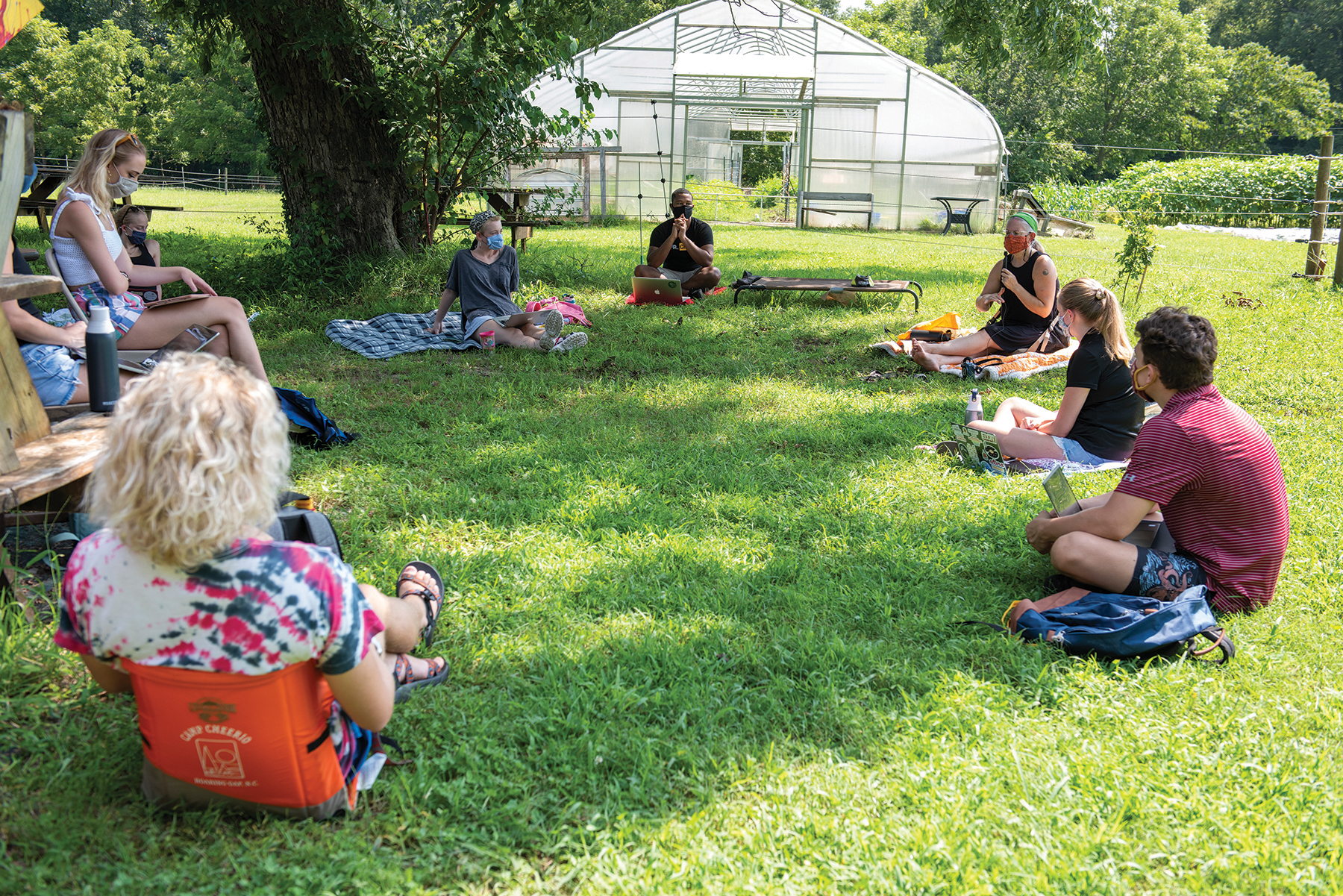A look at Elon's sustainability efforts toward achieving carbon neutrality by 2037.
Just like individuals are making changes to curve the effects of climate change, institutions are making commitments of their own — and Elon is no exception. From features in buildings to resources and pedagogies in the classroom, sustainability is integrated throughout campus and campus life. “Sustainability is an institution-wide effort and a part of the Boldly Elon strategic plan,” says Elaine Durr, director of sustainability at the university. “Elon’s success in achieving its sustainability goals largely depends upon every member of the campus community taking an active role.”
There are plenty of opportunities to learn and be engaged on campus. Students can identify easy actions that lead to positive contributions to sustainability – such as looking at their transportation habits, how they dispose of waste or what they eat – through Sustainable Living Lessons and other programs and events offered by the Office of Sustainability. As part of the Sustainability Faculty Scholars program, faculty who are interested in incorporating or enhancing a focus on sustainable principles and practices in their courses are provided with support for course development. Additionally, any member of the community can take a tour of Loy Farm, which includes the 15-acre solar farm, responsible design studio, forest classroom and food and farming system operations, to learn more about those resources.
These and other efforts are guided by Elon’s latest Sustainability Master Plan, which was adopted in 2015 and maintains Elon’s goal to reach carbon neutrality by 2037, which was established in the initial master plan in 2007. When you look at Elon’s carbon footprint, Durr says, energy consumption is the largest source of emissions at 45-47 percent yearly. That’s the reason why Elon will continue to focus on reducing energy consumption as part of its efforts. “It is something we can do right now that has a number of benefits,” she says, adding that compared to a prior 4-year average, campus energy consumption per square foot has decreased 15.4 percent.
Elon’s Physical Plant and Office of Sustainability have been actively investigating ways to expand the use of renewable energy for the past two years. “Funding energy conservation projects and alternative energy projects is an investment that pays long-term returns both financially and in carbon reduction,” says Tom Flood, assistant vice president of physical plant. Right now, there is a small solar photovoltaic panel system on the roof of Lindner Hall that provides on-site renewable energy that accounts for a small percentage of the building’s energy needs. There are also solar thermal systems that heat the water on a few residential buildings, Lindner Hall and a dining hall, as well as a geothermal system in the Colonnades Neighborhood that reduces the use of fossil fuels by supplementing the complex’s heating and cooling.
Want to know your own carbon footprint? Check out one o these online tools: footprintcalculator.org or carbonfootprint.com/calculator.aspx
But reducing energy consumption alone is not enough to reach the institution’s carbon neutrality goal. For that reason, the university also purchases verified carbon offsets to mitigate areas where reducing emissions is not an option. Take travel associated with study abroad and Study USA, for instance. While global engagement one of Elon’s staple experiences, it also accounts for 26-27 percent of the university’s annual carbon footprint. To offset the impact of those emissions, Durr says Elon started purchasing verified carbon offsets for 20 percent of global engagement travel emissions in fiscal year 2019. Elon is now expanding on this effort and developing an initiative to purchase verified carbon offsets to make the entire global engagement program carbon neutral.
While there are many ways for members of the Elon Community to contribute to Elon’s carbon neutrality goal, one opportunity is to join and utilize UCapture, a free green-tech platform that funds carbon offset projects. Members of the Elon community can download the browser extension, which activates when they visit online partner stores. Projects funded through Elon’s Ucapture program will help reduce Elon’s carbon footprint. Elon has made great strides in its sustainability journey, but there is more work to do, Durr says, adding she is looking forward to continuing and expanding sustainability efforts toward achieving carbon neutrality by 2037. To learn more about Elon’s sustainability efforts, visit the Elon Sustainability website.



